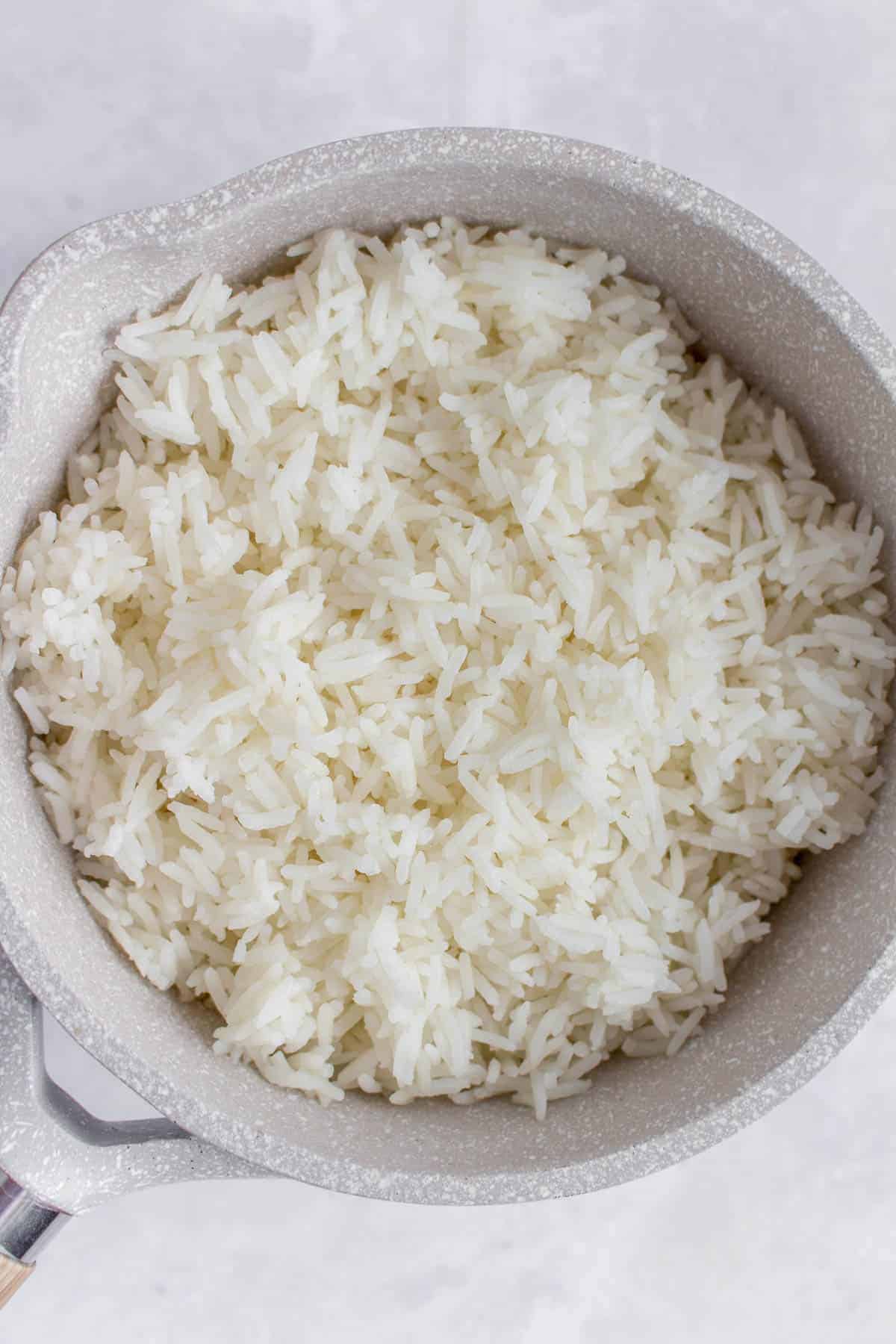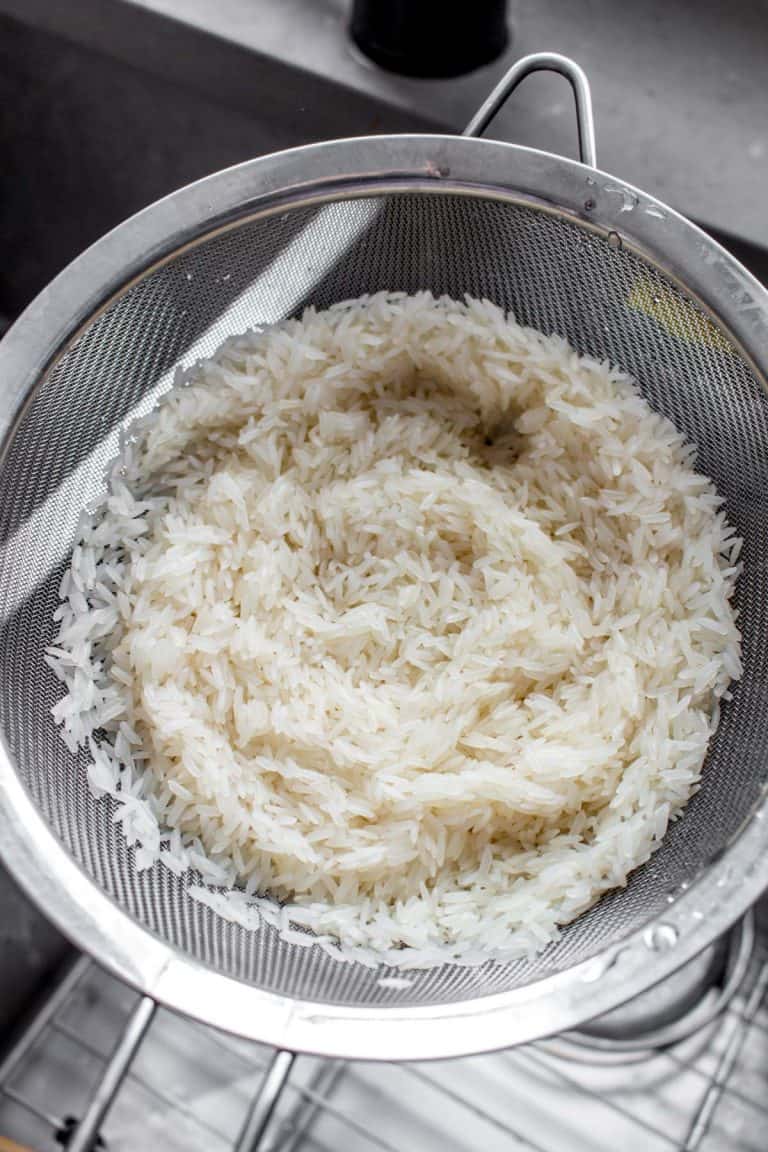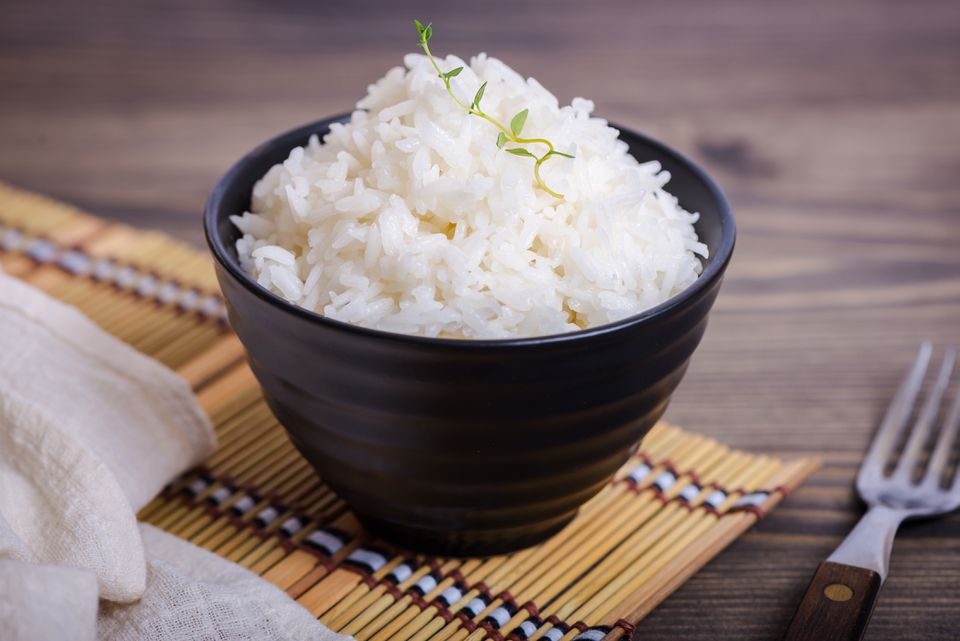Cooking Jasmine Rice on the Stove: A Step-by-Step Guide
I. Introduction to Cooking Jasmine Rice on the Stove

Jasmine rice is a versatile and fragrant rice variety that is commonly used in Asian-inspired dishes. Cooking jasmine rice on the stovetop allows for its delicate aroma and fluffy texture to be perfectly achieved.
A. The Versatile and Fragrant Nature of Jasmine Rice
- A Popular Choice for Asian-inspired Dishes: Jasmine rice is a staple in many Asian cuisines, including Thai, Chinese, and Indian. It pairs well with a wide range of flavors and can be used in stir-fries, curries, and rice bowls.
- Delicate Aroma and Fluffy Texture: Jasmine rice is known for its pleasant floral aroma and soft, fluffy texture. These characteristics make it a favorite for both everyday meals and special occasions.
B. Stovetop Cooking Benefits for Jasmine Rice
- Even Heat Distribution for Uniform Cooking: Stovetop cooking provides even heat distribution, allowing the rice to cook uniformly. This results in consistent texture and prevents unevenly cooked grains.
- Control over Texture and Moisture: Cooking jasmine rice on the stovetop gives you control over the texture and moisture level. You can adjust the cooking time and liquid ratio to achieve your preferred level of tenderness and moisture.
II. Preparing Jasmine Rice for Stovetop Cooking

Proper preparation of jasmine rice is important to ensure optimal results when cooking on the stovetop.
A. Selecting and Measuring the Proper Amount of Rice
- Determining Serving Size and Yield: Determine the number of servings you need and consider the expansion of rice during cooking. Typically, 1 cup of uncooked jasmine rice yields around 3 cups of cooked rice.
- Proper Water-to-Rice Ratio: The general rule of thumb for jasmine rice is to use a 1:1.5 or 1:1.75 ratio of rice to water. Adjust the amount of water based on your desired texture, as some prefer their rice slightly drier or stickier.
B. Rinsing and Soaking Techniques
- Removing Excess Starch: Rinse the jasmine rice under cold water until the water runs clear. This helps remove excess starch from the rice grains, resulting in fluffier cooked rice.
- Enhancing Fluffiness and Texture: Soaking the rice for 15-30 minutes before cooking can help improve the texture and fluffiness. Drain the soaked rice before cooking to maintain the correct water-to-rice ratio.
III. Stovetop Cooking Techniques for Jasmine Rice
There are several stovetop cooking techniques that work well for jasmine rice.
A. Basic Stovetop Rice Cooking Method
- Choosing the Right Pot or Saucepan: Use a heavy-bottomed pot or saucepan with a tight-fitting lid to ensure even heat distribution and prevent steam from escaping during cooking.
- Bringing the Rice to a Boil: Add the rinsed and drained rice to the pot along with the appropriate amount of water. Bring the mixture to a boil over medium-high heat, then reduce the heat to low and cover the pot tightly with the lid.
B. Simmering and Steaming Jasmine Rice
- Reducing Heat and Simmering Time: Once the rice is brought to a boil, reduce the heat to low and let it simmer for approximately 10-15 minutes. Avoid lifting the lid during this time to prevent heat and steam from escaping.
- Allowing the Rice to Steam and Rest: After simmering, remove the pot from the heat and let the rice steam for an additional 5-10 minutes. This resting period allows the rice grains to fully absorb the remaining moisture and become tender and fluffy.
Cooking jasmine rice on the stove allows you to achieve fluffy and fragrant perfection every time. This comprehensive guide has provided step-by-step instructions for preparing, cooking, and serving jasmine rice on the stovetop. By following the recommended rinsing, soaking, and cooking techniques, you can enjoy the delicate aroma and fluffy texture of this versatile rice variety. Whether you’re serving it as a side dish or incorporating it into your favorite recipes, stovetop cooked jasmine rice adds a touch of elegance to any meal. So, grab your pot, measure your rice, and savor the fragrant perfection of stovetop cooked jasmine rice.
IV. Achieving Fluffy and Perfectly Cooked Jasmine Rice

Jasmine rice is a fragrant and versatile rice variety that can be the perfect accompaniment to many dishes. To achieve fluffy and perfectly cooked jasmine rice, there are a few key steps to follow.
A. Timing and Monitoring Cooking Progress
- Determining Cooking Time for Jasmine Rice: The cooking time for jasmine rice can vary depending on the brand and quality of the rice, as well as the desired texture. As a general guideline, follow the instructions on the rice package or use a ratio of 1 cup of rice to 1.5 cups of water.
- Checking for Doneness and Texture: Once the rice has absorbed the water, it is important to check for doneness and texture. The grains should be tender but still have a slight chewiness. Avoid overcooking, which can result in mushy rice.
B. Fluffing and Resting the Cooked Rice
- Allowing the Rice to Rest Off the Heat: After cooking, remove the pot from the heat and let the rice sit, covered, for about 5-10 minutes. This allows the steam to evenly distribute and the rice to finish cooking in its residual heat.
- Fluffing with a Fork or Rice Paddle: After the resting period, fluff the rice gently with a fork or rice paddle. This helps to separate the grains and create a light and fluffy texture. Avoid stirring vigorously, as this can break the grains and result in sticky rice.
V. Serving and Enjoying Jasmine Rice
/how-to-make-jasmine-rice-3217510-hero-01jpg-5bd8c90346e0fb0051726587.jpg)
Once the jasmine rice is perfectly cooked and fluffy, it’s time to present and enjoy it.
A. Presenting the Rice
- Fluffing and Transferring to a Serving Bowl: Prior to serving, gently fluff the rice once more to separate any clumps. Transfer the rice to a serving bowl, using a spatula or rice paddle to ensure even distribution.
- Garnishing Options for Visual Appeal: Consider garnishing the rice with chopped fresh herbs, such as cilantro or green onions, to add a burst of color and freshness. You can also sprinkle sesame seeds or drizzle a little sesame oil on top for added flavor.
B. Pairing and Serving Suggestions
- Accompanying Main Dishes or Curries: Jasmine rice is a versatile side dish that pairs well with a variety of main dishes, such as grilled meats, stir-fries, or curries. The fragrant jasmine aroma and fluffy texture provide a perfect complement to the flavors of these dishes.
- Using Jasmine Rice in Fried Rice or Stir-fry Recipes: Leftover jasmine rice can be used to make delicious fried rice or stir-fries. The cooled and slightly dried-out rice works best for these recipes, as it prevents the rice from becoming mushy and allows for better absorption of flavors.
Cooking jasmine rice on the stove allows you to achieve fluffy and fragrant perfection every time. This comprehensive guide has provided step-by-step instructions for preparing, cooking, and serving jasmine rice on the stovetop. By following the recommended rinsing, soaking, and cooking techniques, you can enjoy the delicate aroma and fluffy texture of this versatile rice variety. Whether you’re serving it as a side dish or incorporating it into your favorite recipes, stovetop cooked jasmine rice adds a touch of elegance to any meal. So, grab your pot, measure your rice, and savor the fragrant perfection of stovetop cooked jasmine rice.
